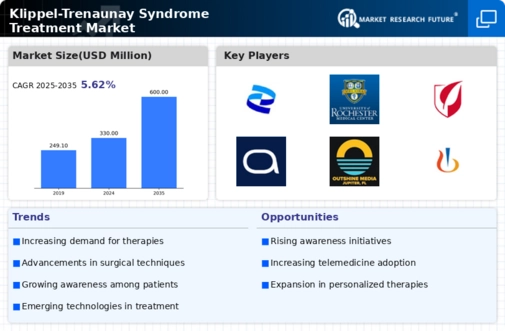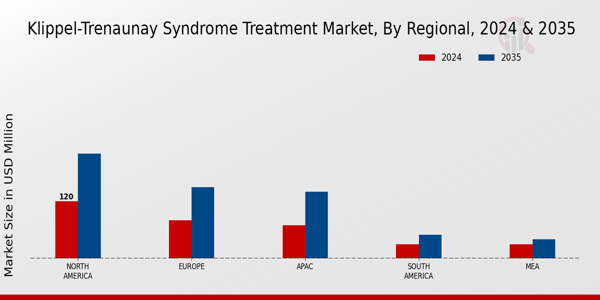Market Analysis
In-depth Analysis of Klippel Trenaunay Syndrome Treatment Market Industry Landscape
The unique challenges and opportunities that come with addressing this rare vascular disorder are reflected in the market dynamics of Klippel Trenaunay Syndrome (KTS) treatment. Klippel Trenaunay Syndrome is marked by three symptoms such as capillary malformations, venous varicosities and bony or soft tissue overgrowth. The focus on targeted treatments has been driven by KTS being a rarity but increasing recognition and diagnosis. This results from medical advancements, research initiatives, as well as the need for effective therapeutic interventions.
Understanding Klippel Trenaunay Syndrome that resulted to development of possible treatment options has significantly benefited from medical researches and technologies advancement in the recent years. There have consequently been greater investments in research and development with pharmaceutical companies attempting to develop new therapies for dealing with the complexity characterizing the condition. This means that there are now a lot of potential treatments under development which range from medicines through to surgery aimed at offering better control of KTS-related symptoms.
The ever-changing healthcare policies and regulatory frameworks also contribute towards the market dynamics. In an attempt to appreciate the complexities associated with rare diseases; regulatory bodies have started encouraging more research in this area. Rare disease treatments having orphan drug designations as well as expedited approval processes have created a conducive environment for developing therapies meant for Klippel Trenaunay Syndrome patients. These regulations induce pharmaceutical firms into investing more into KTS studies besides ensuring timely access to advanced medications for patients.
Klippel Trenaunay syndrome management clinical aspect along with its sociocultural-economic angle also affect the market too much. Such disorder mostly needs collaboration among different experts including those specializing in dermatology, orthopaedics just like other fields which deal with blood vessels problems. As such, specialized clinics plus treatment centers have started coming up thus making KTS management structured and more patient-oriented than before. However, some problems remain unsolved, for instance, lack of awareness amongst the public and medical practitioners hampering timely detection and intervention.
Market dynamics with regards to KTS treatment are also shaped by socio-economic aspects. The financial implications of managing such a chronic and intricate condition like Klippel Trenaunay Syndrome could be significant. Therefore, healthcare policies, insurance coverage as well as patient assistance programs have drawn attention to ensure that those who require the necessary medications do not suffer financially in a way that is too much for them or their families.















Leave a Comment